Vancouver’s 75-year journey with electric buses: sustainable transit solutions
Vancouver’s 75-year journey with electric buses: sustainable transit solutions
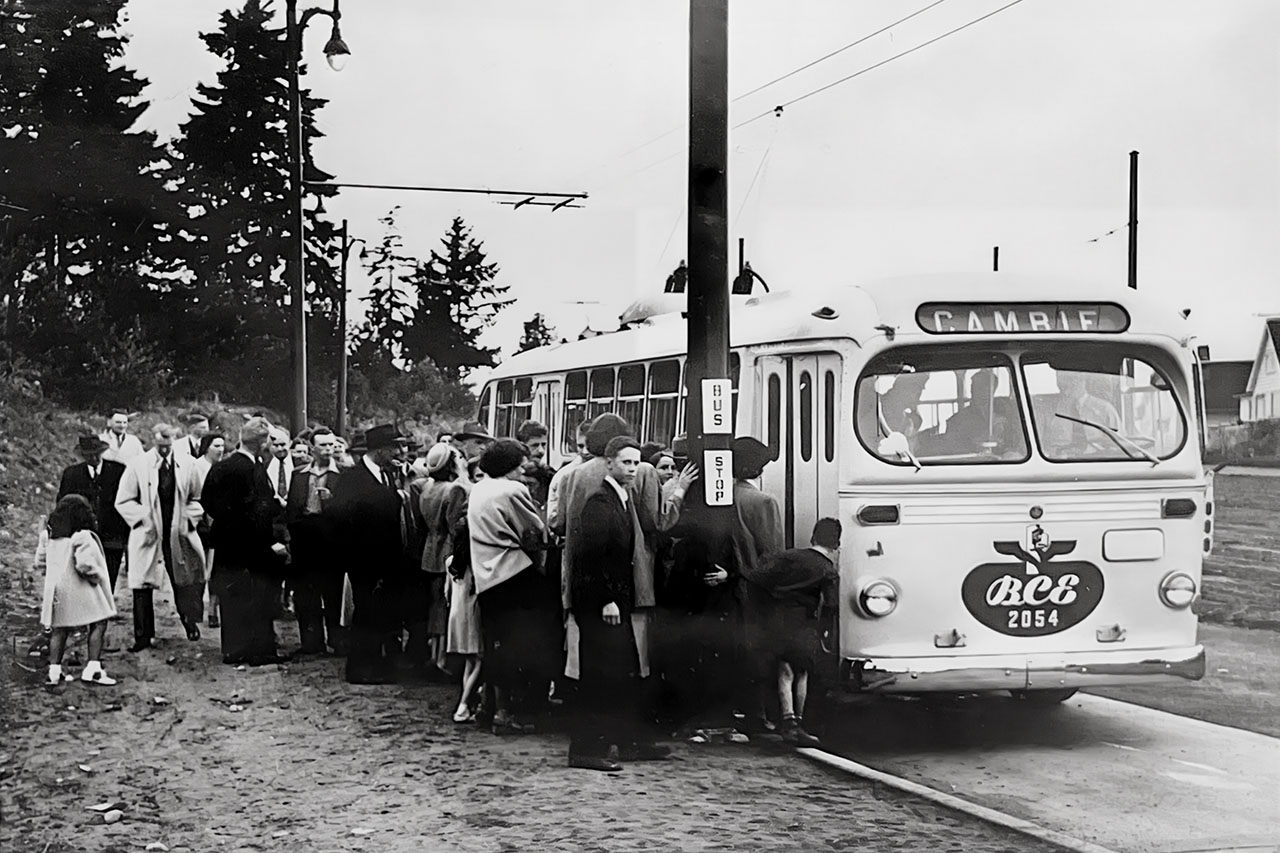
As the world grapples with the urgent need to address climate change and reduce greenhouse gas emissions, public transit agencies around the globe are exploring decarbonization strategies. Among these, the adoption of electric buses is gaining momentum, offering a promising solution to replace diesel engines and contribute to a cleaner and greener future. While many cities are just beginning to embrace electric transit, Vancouver, known for its breathtaking landscapes and vibrant city life, has achieved an incredible milestone – 75 years of clean electric transit buses.
Since their introduction in 1948, electric buses have become the backbone of public transit in the city. The decision to adopt electric trolley buses has proven to be visionary, setting an example for sustainable public transportation worldwide. The history of electric buses in Vancouver outlines their positive impact on the environment and highlights their role in the city’s commitment to carbon neutrality.
A historic beginning: World War II and the rise of electric-trolley buses
Vancouver’s journey towards electric transit buses began during World War II when the city experienced a surge in transit ridership. As industries produced wartime goods for export through Vancouver’s bustling ports, personal vehicle use was restricted, resulting in increased reliance on the streetcar system and motor buses operated by the British Columbia Electric Railway Company (B.C.E.R. or B.C. Electric) at the time. However, the transit system suffered wear and tear during the war years and was in dire need of either reconstruction or replacement as the war came to an end.
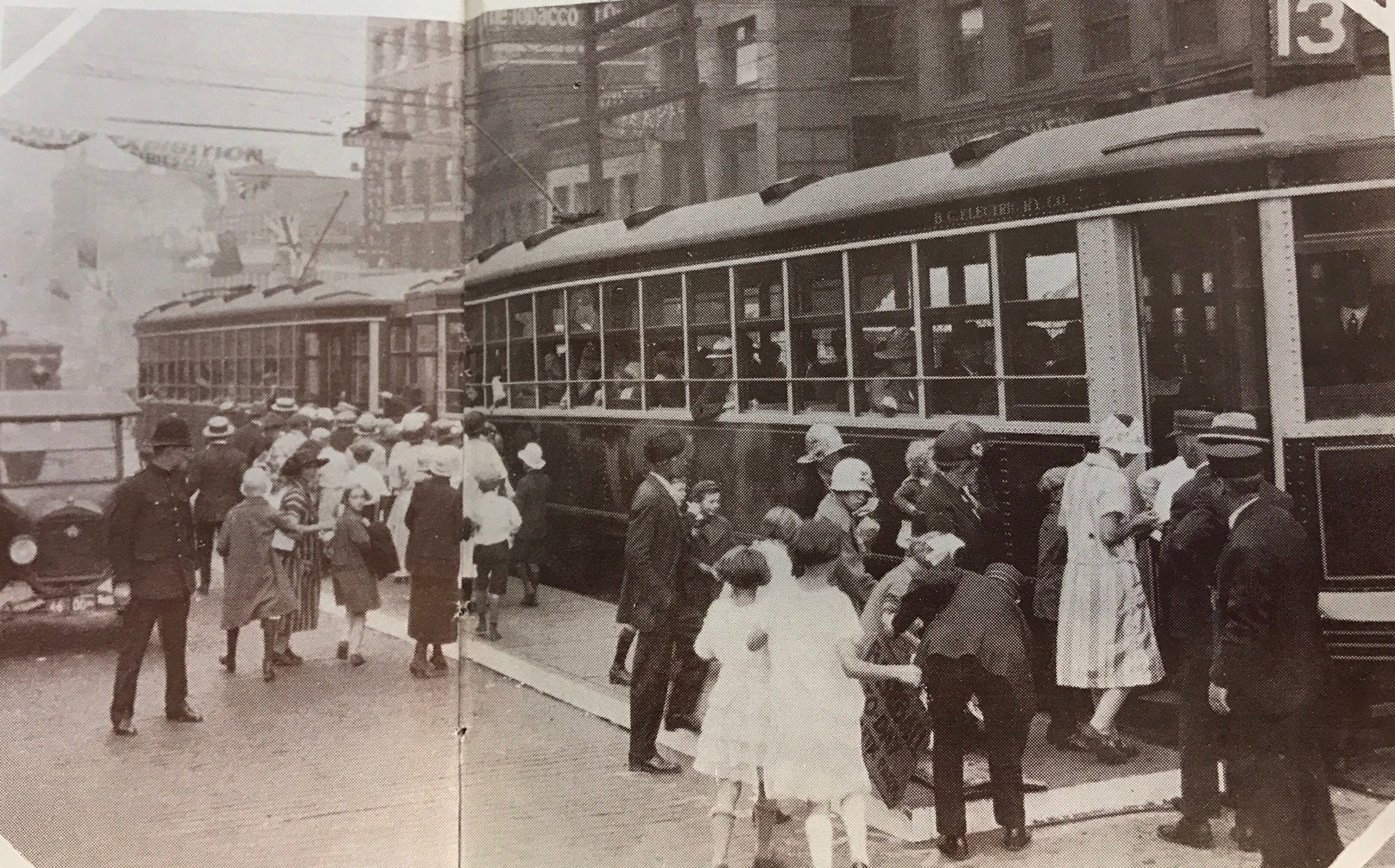
It was during this time that the potential of electric trolley buses became evident. A trial of a Seattle trolley bus in December 1945 showcased the benefits of this technology: quiet, emission-free, and capable of handling hilly terrains that are challenging for motor buses.
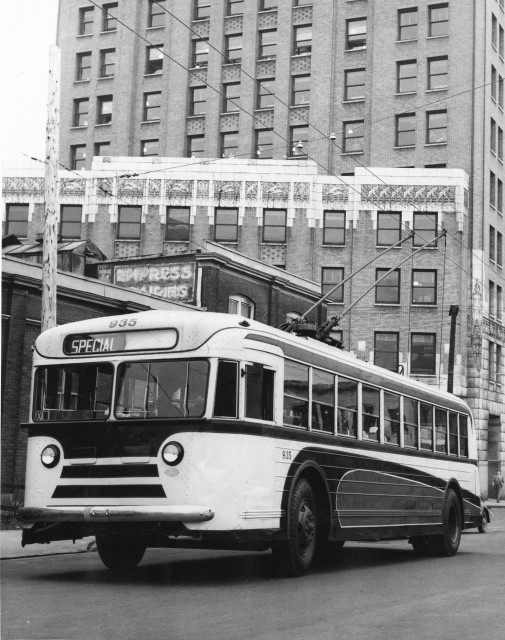
Embracing electric trolley buses: a vision for sustainable transit
Recognizing the benefits, Vancouver approved the operation of electric trolley buses in 1946, granting B.C.E.R. a franchise. The first two coaches of an order of 30 trolley buses arrived in the summer of 1947.
Powered by the abundance of clean hydro power in the region, the electric trolley buses quickly gained popularity. More orders, this time for the larger T-48 model were placed, and an investment program was launched to expand electric operations. Despite post-war supply chain issues delaying the rollout, the electric trolley bus system was officially inaugurated on August 16, 1948, with the initial 30 buses servicing the Fraser-Cambie route.
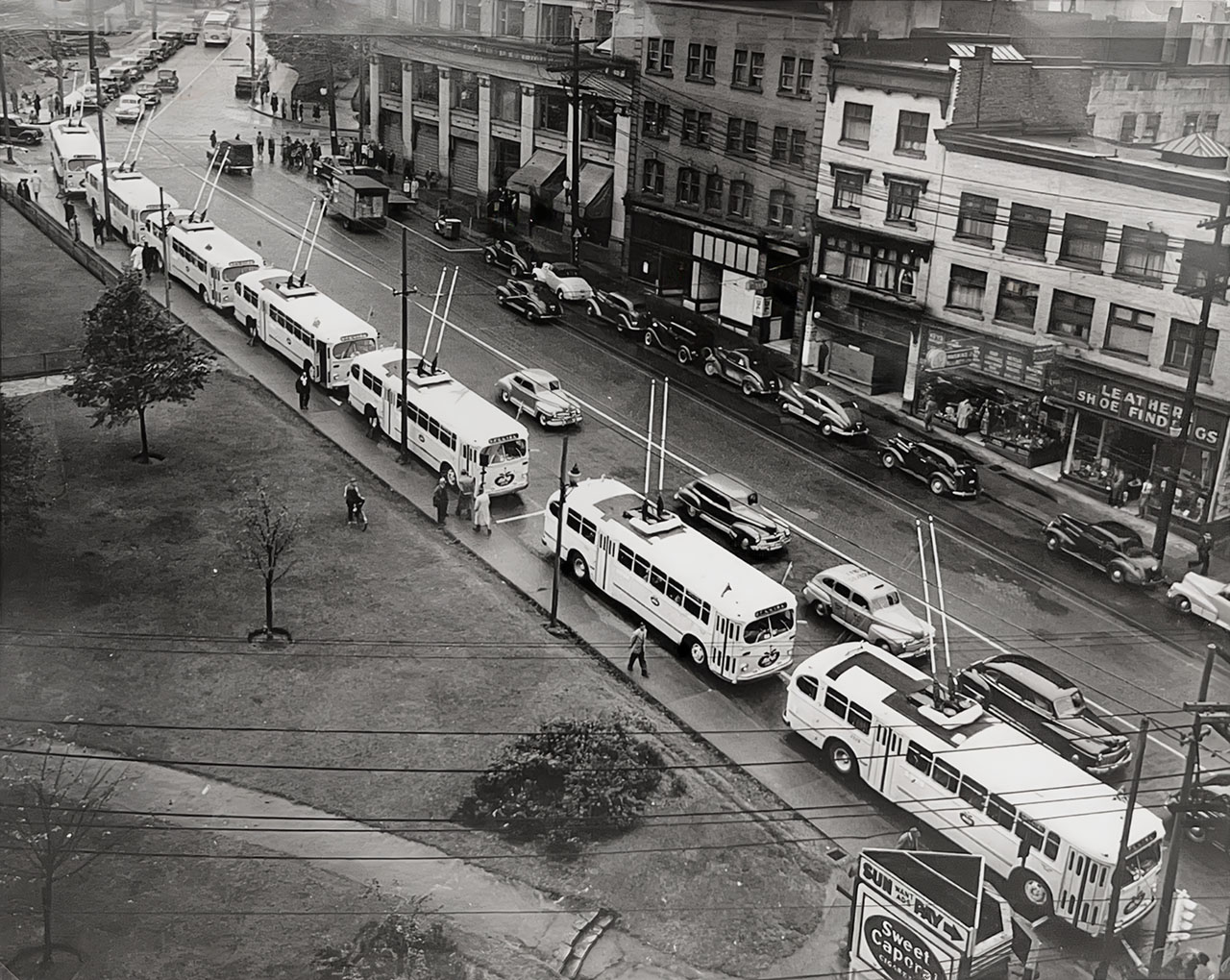
Featuring electric drives and brakes derived from streetcar propulsion systems, the T-44 trolley buses quickly gained popularity for their quiet and comfortable rides, attracting passengers who had previously ridden the worn-out streetcar system. As the years passed, the trolley bus fleet grew rapidly, and by 1955, 327 electric trolley buses operated on 19 routes.
Use of locally produced clean hydro power
Followed by the province’s expropriation of British Columbia Electric Company (BCE), the new crown corporation B.C. Hydro was established and subsequently took over public transit in the city in 1961.

Despite some trolley services converting to diesel operations in the 1960s, rising fuel prices during the 1970s highlighted the advantages of locally generated electric power.
Hence, it is no surprise, that a study commissioned by the Greater Vancouver Regional District (GVRD) as early as 1971 found that retaining and expanding the electric trolley bus system was beneficial. As a result, GVRD pushed B.C. Hydro to improve the system.
Facing modern challenges: innovations and new technologies
A new articulated bus model from Switzerland was tested in 1974. And, in the same year, an order was placed for 50 Flyer Industry E800 trolley buses. The arrival of these new buses in 1976 led to the decommissioning of the smaller T-44 buses after 28 years of service.
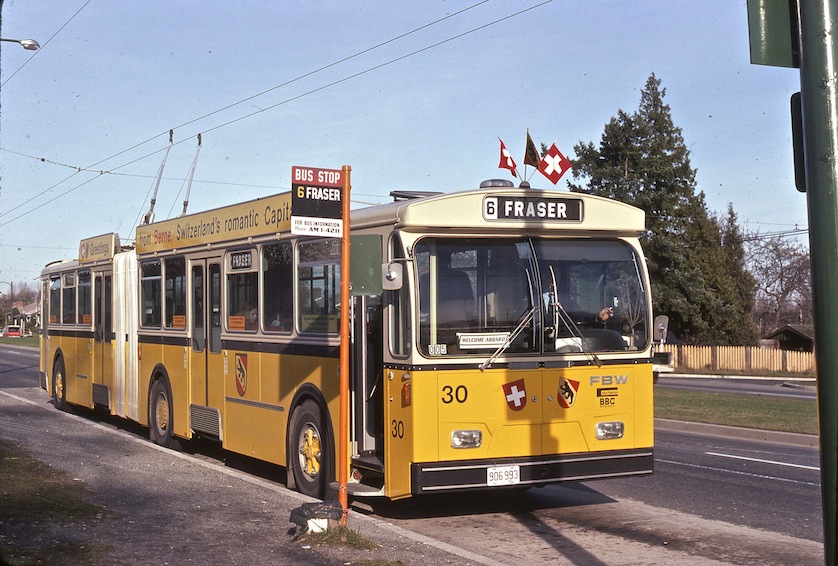
The geographic location of Vancouver minimized urban sprawl and travel patterns did not change much over the years. Thus, the trolley network erected in the 1950s was still adequate three decades later. Over the years, Vancouver’s trolley bus system underwent only minor transformations. At the time of the 30th trolley anniversary, 300 trolley buses served 20 routes.
The Urban Transit Authority, a new crown cooperation, took over transit operations from B.C. Hydro in 1980. One of the first tasks for the new entity was to find a replacement for the first-generation trolley coaches, some of them in revenue service for 30 years at the time!
A request for quotes for new trolley buses in the same year gathered much international interest with several bus models and propulsion packages to choose from. Even though its E800 model proved less successful, Flyer was awarded the contract for a total of 245 buses of type E901A with solid state chopper propulsion. The contract included the retrofit of the E800 model with a new propulsion system used on the new E901A model.
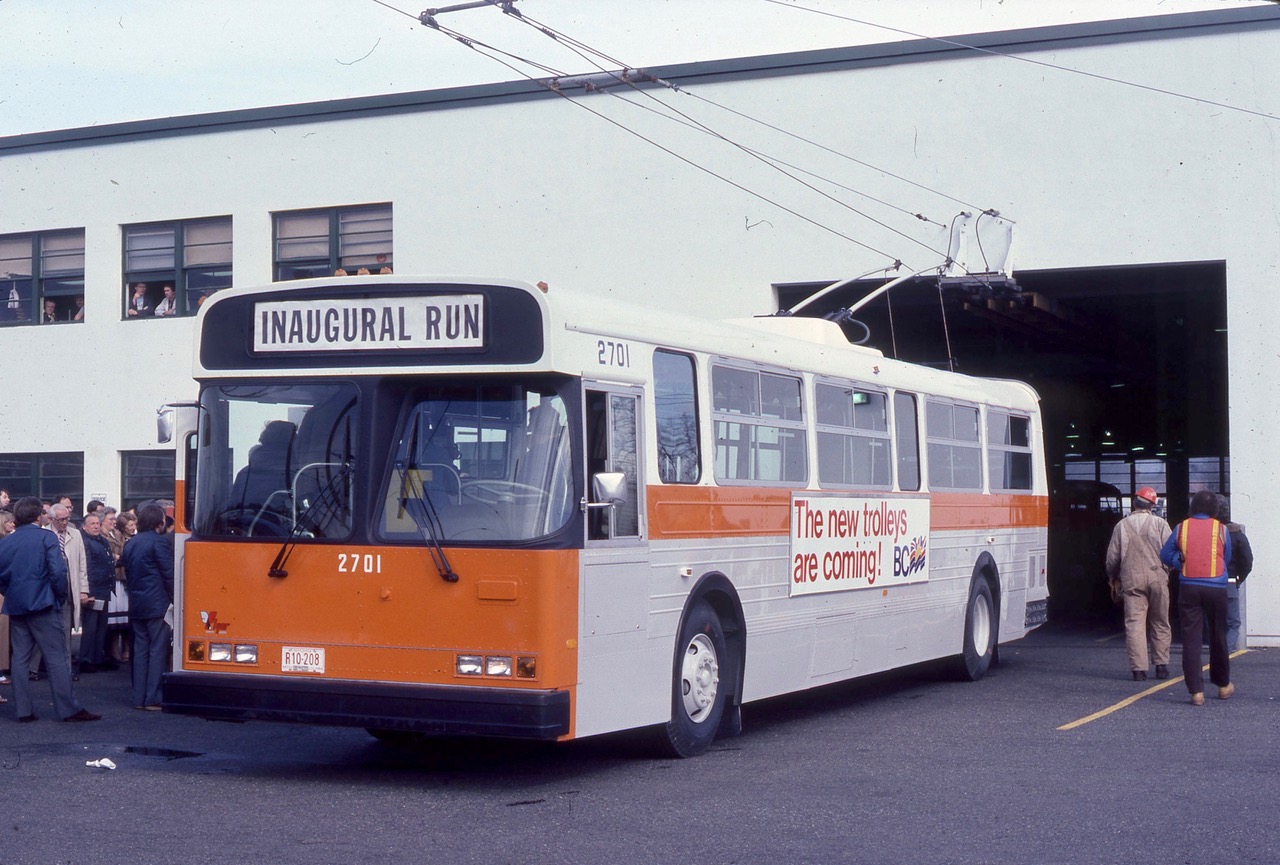
It turned out to be cheaper to build additional buses than fitting the E800 model with the new propulsion. Hence, this idea was abandoned. After some teething problems with the new E901A buses, the first-generation trolleys made by Brill were finally retired in 1984.
The introduction of the driverless SkyTrain rail system in 1985 led to trolley route expansions to serve new SkyTrain stations and a new route to University of British Columbia (UBC) was inaugurated in 1988.
At the occasion of the 50th trolley bus anniversary in 1998 it was noted that the fleet of 244 Flyer E901s provided more than 12 million kilometres (an equivalent of more than 860,000 revenue hours) of service per year; with service intervals on busy routes at three minutes during peak times and with 223 of 244 buses operating, providing service more than 20 hours a day, seven days a week.
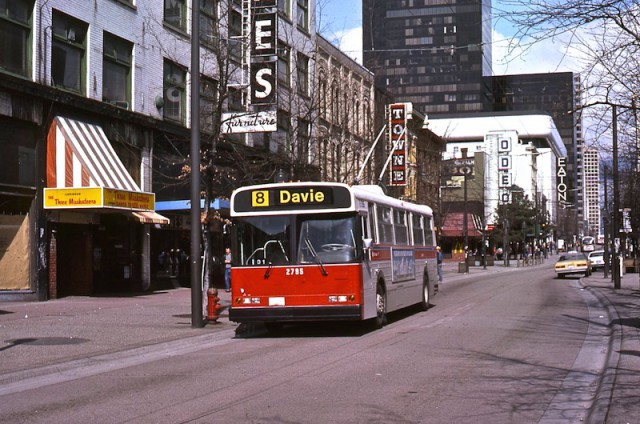
In the late 1990s, the Greater Vancouver Transportation Authority (TransLink) took over transit operations, and Coast Mountain Bus Company (CMBC) became responsible for bus operations.
Toward carbon neutrality: Vancouver’s ongoing commitment
In late 2003 TransLink awarded a contract for the supply of 228 new electric trolley buses to New Flyer. The third-generation trolley buses are accessible low floor vehicles designated E40LFR for the 40-foot and E60LFR for the 60-foot articulated version came equipped with state-of-the-art Kiepe Electric AC propulsion.
The pilot bus with fleet number 2101 arrived in summer of 2005 for extensive testing before the series production. These buses featured a new restyled design of the standard New Flyer coach as well as emergency power batteries and a much-improved Kiepe Electric current collector system.
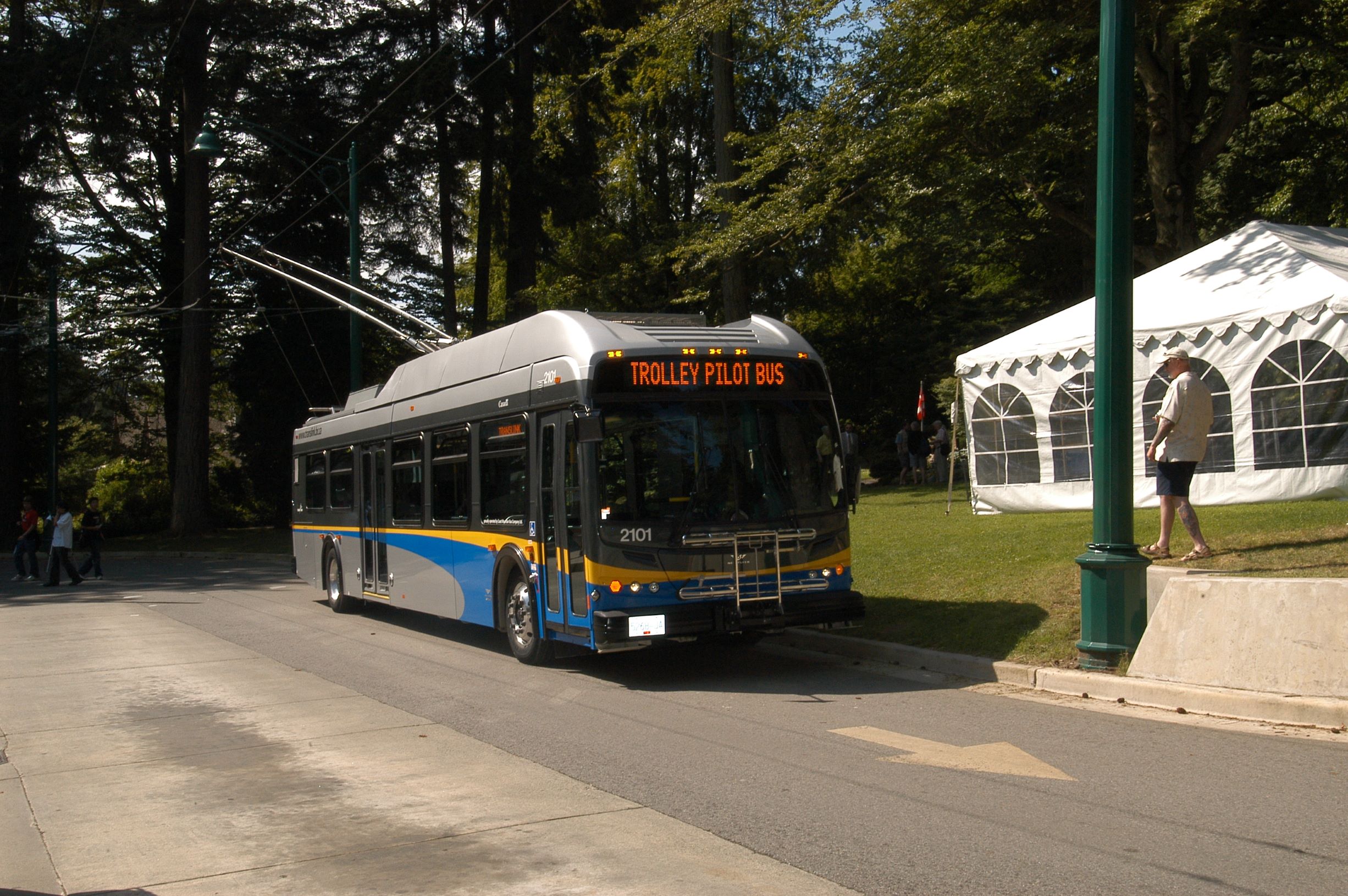
A special feature is a motorized retriever reel developed in close cooperation between CMBC and Kiepe Electric. These powered reels lower the poles rapidly in case they are out of the operational range. 34 additional E60LFRs completed the fleet of 262 buses in 2009, just in time for the 2010 Olympic Winter Games. The reliability of the New Flyers immediately surpassed its predecessors.
Once enough E40LFR and E60LFR coaches were delivered, it was time to say farewell to the second-generation trolleys when the E901A coaches were retired in 2008. It is remarkable to note that despite their age and heavy use, 80 of the retired buses were sold to Mendoza, Argentina where they continued operating until 2017.

At the occasion of the 60th trolley bus anniversary in 2008, deputy mayor Heather Deal stated that “sustainable transit systems like the trolley bus make Vancouver – in fact the whole region – one of the most livable in the world”.
The opening of the new Canada Line metro rail link brought some changes to the trolley network in 2010. 2016 a new belt line was introduced also serving the Yaletown/Roundhouse station of Canada Line, English Bay and the Robson Street shopping areas. Other recent route changes relate to the ongoing extension of SkyTrain along the Broadway corridor.
The current fleet of Vancouver’s E40LFR and E60LFR electric buses have proven successful as the working horse of the bus fleet for well over 15 years now and clocked more than 175 million kilometres in revenue service, making significant contributions to reducing CO2 emissions. This is particularly remarkable given the low average speed on the busy downtown routes with frequent stops.
Looking to the future: in motion charging technology
As technology advances, Vancouver remains committed to improving its public transit system further. CMBC began exploring In Motion Charging (IMC) technology in 2023.
IMC buses, featuring a traction battery with about 20 km off wire range, utilize existing overhead lines to charge batteries while in service. This innovation allows for route extensions without major capital investments, making electrification more accessible and economical. IMC technology eliminates the need to park the buses while the batteries are charging and allows distributing electric power demand throughout the day.
In closing
Vancouver’s 75-year journey with electric buses is a testament to the city’s commitment to sustainable transit solutions.
From the initial introduction of electric trolley buses to the ongoing adoption of cutting-edge technologies like IMC, Vancouver continues to be a global leader in decarbonizing public transportation.
The success of the trolley bus network serves as an inspiration for other cities worldwide, demonstrating the significant positive impact that sustainable transit can have on both the environment and urban livability.
As Vancouver moves forward, its electric buses will remain a great example of responsible and forward-thinking transportation planning.
Sources: Heather Conn, Vancouver’s Trolley Buses 1948-1998; Tom Schwarzkopf, Tires and Wires
This guest post was written by Klaus P. Canavan, who is the Regional Director – British Columba for the Canadian Transit Heritage Foundation. Founded in 1992, the Canadian Transit Heritage Foundation is the only national organization supporting and celebrating Canada’s transit heritage.
Klaus P. Canavan





